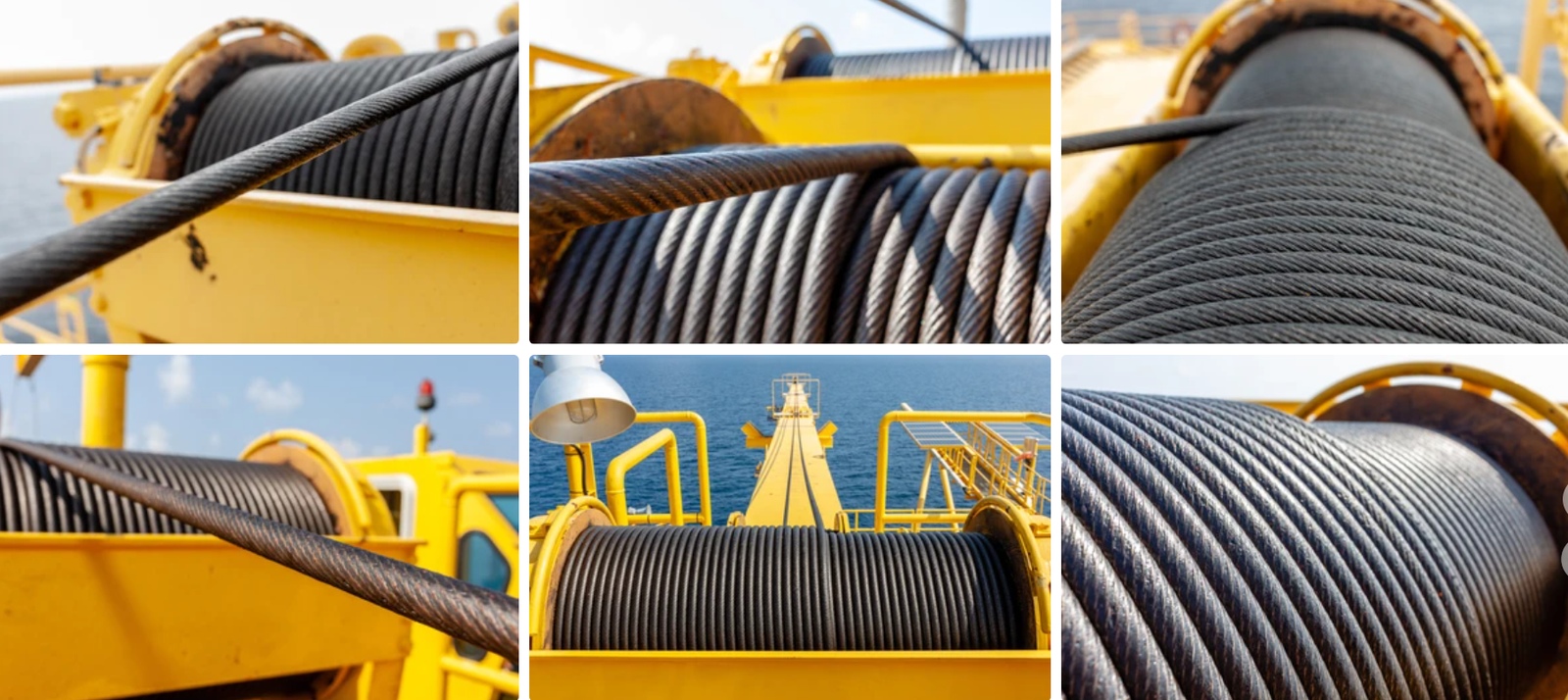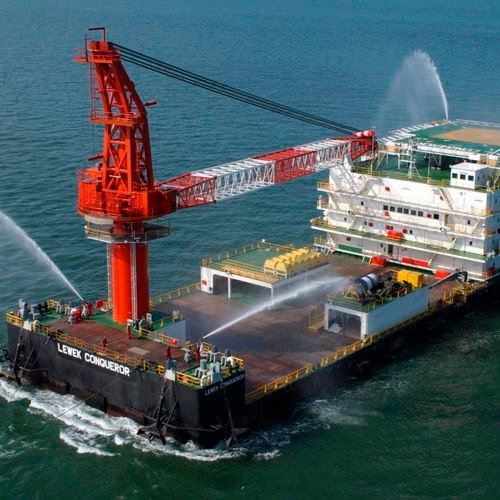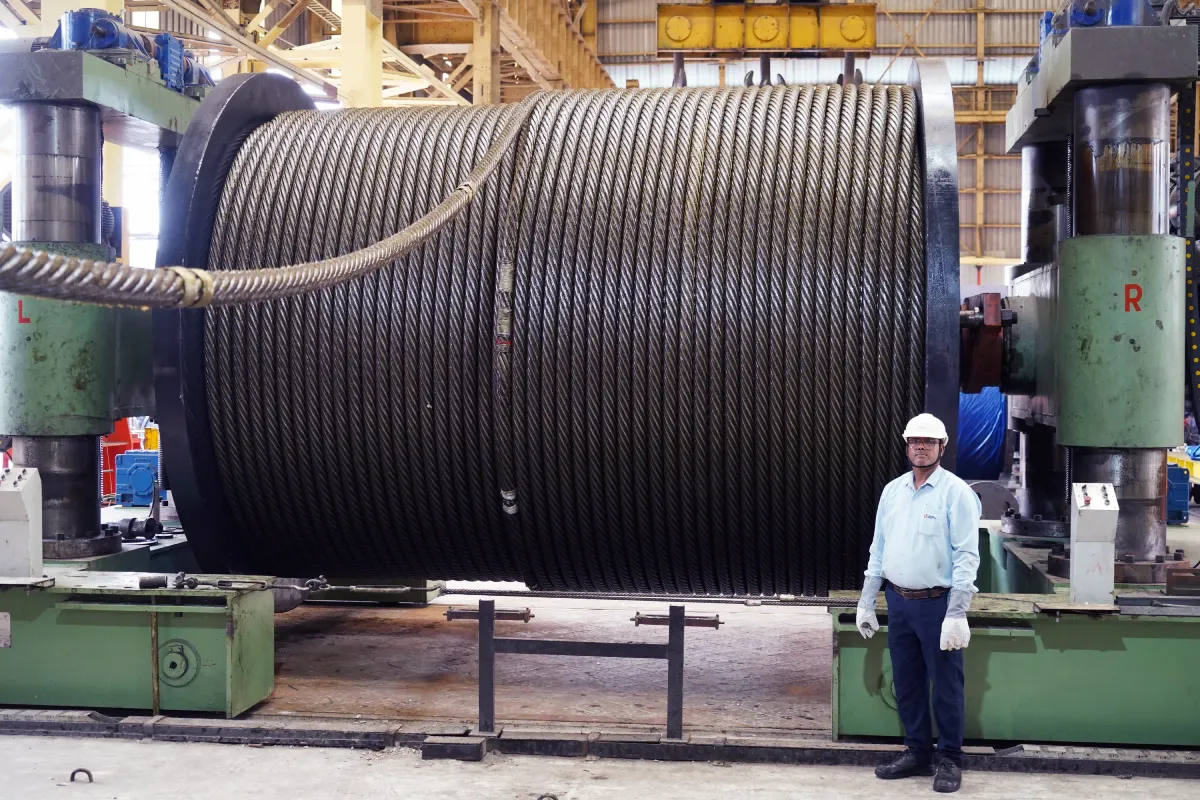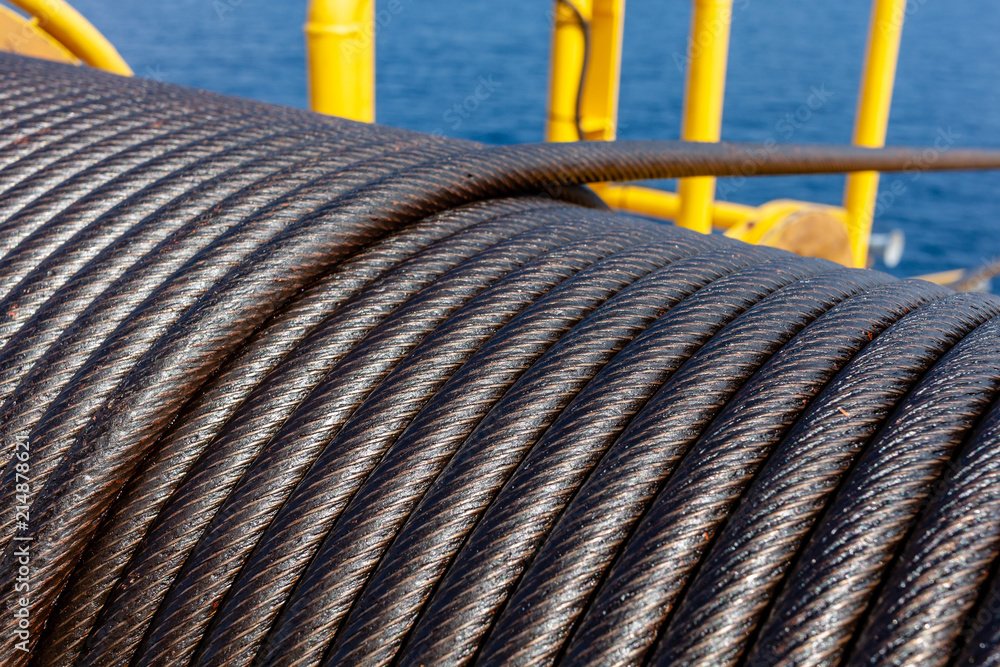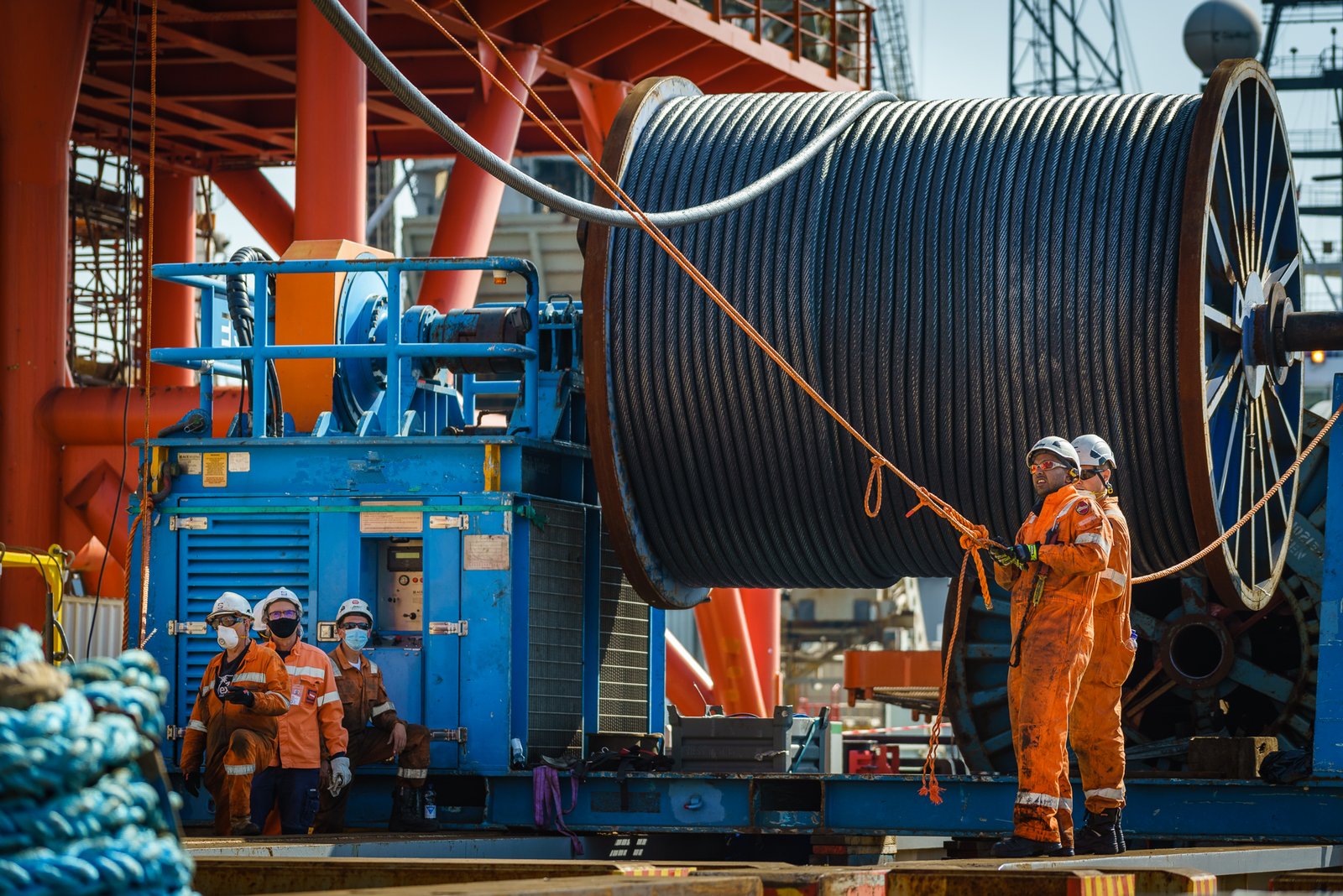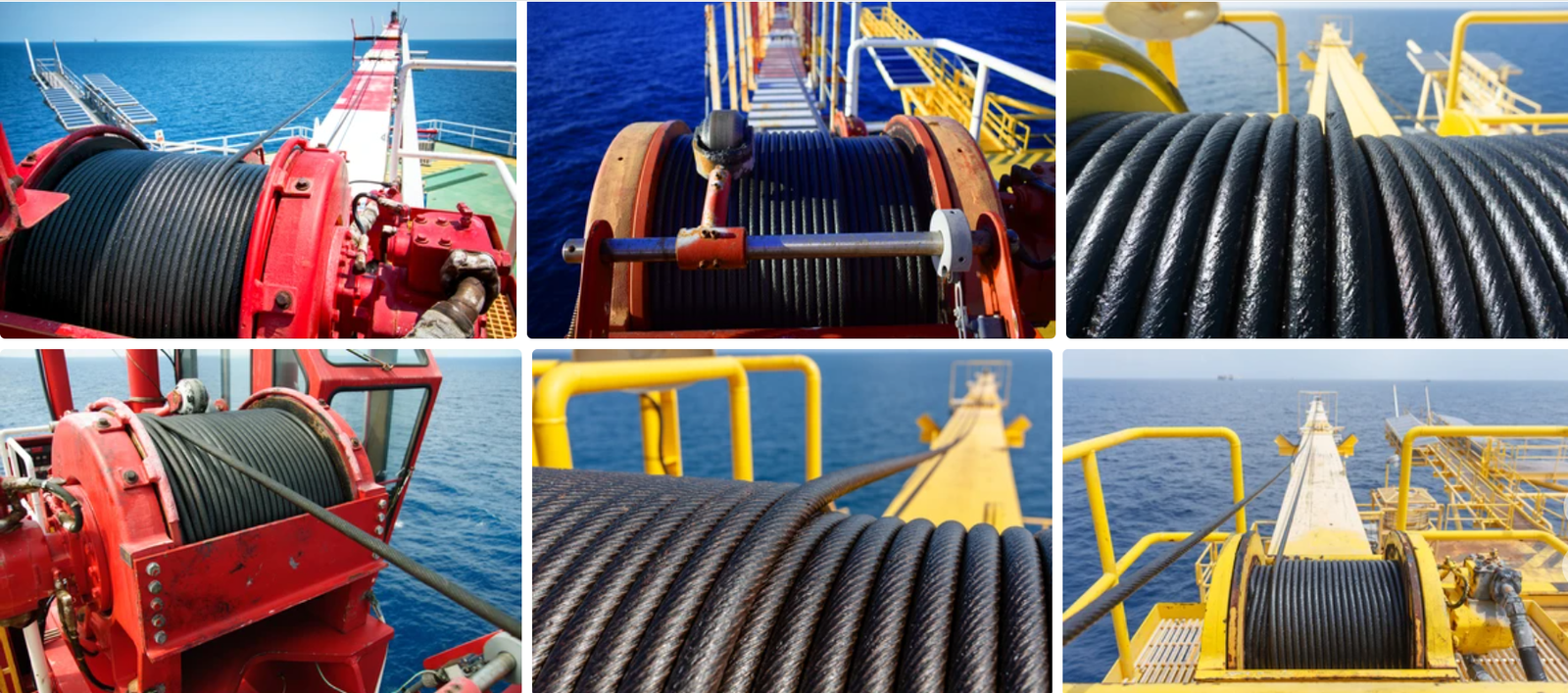Your offshore operation faces constant risks. A failed wire rope can halt everything, costing immense time and money. Choosing the right rope is critical for safety and efficiency.
The best offshore crane wire rope is selected by matching its specifications to the crane’s demands. You must prioritize high tensile strength, superior fatigue resistance, excellent corrosion protection, and essential maritime certifications like DNV or ABS.
I once helped a new client whose ropes were failing far too quickly in the salty air. Their previous supplier provided a standard rope. This small oversight caused major operational delays. Let’s make sure that never happens to you.
Why is Extreme Corrosion Resistance So Crucial?
The offshore environment is one of the toughest on Earth. Saltwater, constant humidity, and harsh weather relentlessly attack steel. A wire rope without proper protection will fail.
Extreme corrosion resistance is crucial because it directly prevents rust and degradation from the inside out. This protection maintains the rope’s strength, ensures operational safety, extends service life, and avoids frequent, expensive replacements on your rig.
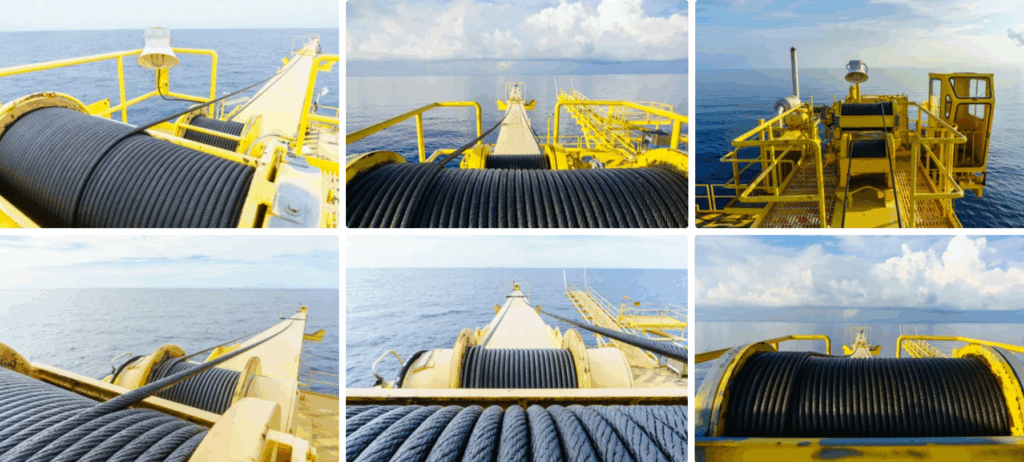
Understanding Corrosion Protection
Corrosion isn’t just a surface-level issue. For a wire rope, it’s a deep, structural threat. Seawater can seep between the individual wires and strands, causing internal corrosion that is invisible from the outside. This unseen damage weakens the rope significantly, creating a massive safety hazard. At our factory, we combat this in two primary ways.
Galvanization as the First Line of Defense
Galvanization is the process of applying a protective zinc coating to the steel wires. Zinc acts as a sacrificial layer. It corrodes before the steel does, protecting the rope’s core integrity.
There are different classes of galvanization. For offshore applications, a heavy zinc coating (Class A) is the standard requirement. It provides a solid baseline of protection against the marine environment. We ensure all our galvanized ropes meet or exceed these standards.
Plastic Impregnation for the Ultimate Shield
For maximum protection, we recommend plastic-impregnated (PI) wire ropes. This is a more advanced solution. During manufacturing, we infuse a special polymer into the rope. This plastic completely fills the empty spaces between the strands and wires.
This process has two main benefits. First, it creates an impenetrable barrier that locks out water, salt, and dirt. This effectively stops internal corrosion before it can even start. Second, the plastic reduces friction between the strands as the rope bends and flexes. This significantly increases fatigue resistance and a longer service life.
Comparing Protection Levels
Choosing between standard galvanization and plastic impregnation often depends on the specific application and budget. Here is a simple comparison.
| Feature | Heavily Galvanized (Class A) | Plastic Impregnated (PI) |
|---|---|---|
| Internal Corrosion | Good protection | Excellent protection |
| Internal Friction | Standard | Reduced (Longer life) |
| Sealing | No | Fully sealed against moisture |
| Service Life | Good | Best |
| Initial Cost | Lower | Higher |
| Long-Term Value | Good | Excellent |
For critical lifts and long-term deployments, the added investment in a plastic-impregnated rope often provides a better return. It reduces the total cost of ownership by minimizing downtime and replacement frequency.
What Are the Key Specifications to Check?
Choosing a rope isn’t just about corrosion. You need to look at the technical data sheet carefully. The performance of your crane depends on getting these details right from the start.
The key specifications are the rope’s diameter, construction, tensile strength (or grade), and minimum breaking load (MBL). These factors must align perfectly with the crane manufacturer’s recommendations to ensure safe and efficient operation.
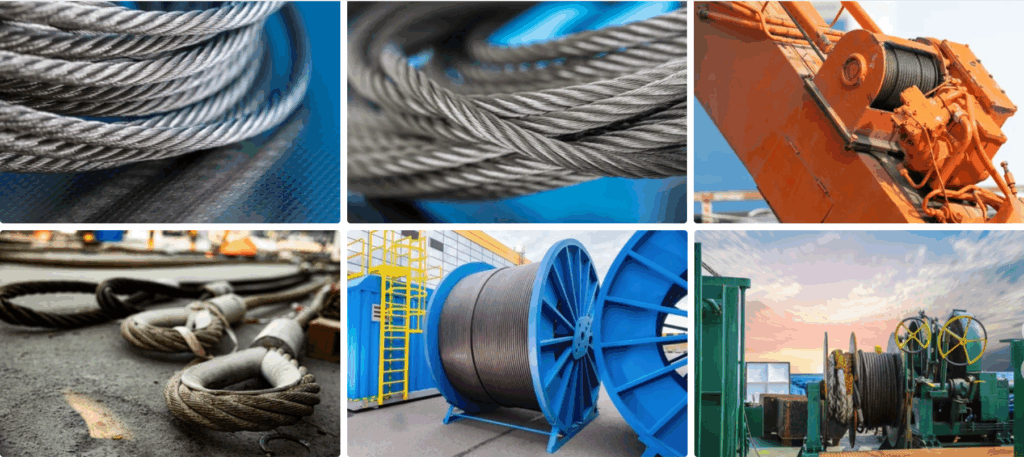
Decoding the Spec Sheet
A rope’s specification sheet contains vital information. As a purchasing manager or engineer, understanding these terms is essential for making an informed decision. Let me break down the most important ones.
Rope Construction
Construction refers to how the rope is made. It’s described by two numbers, like 6x36 or 35x7. The first number is the number of strands. The second is the number of wires in each strand.
- Rotation-Resistant Ropes: For many crane applications, especially single-hoist lines, you need a rotation-resistant or non-rotating rope. Constructions like 35WX7 are designed to resist the tendency to spin under load. This is critical for controlling the payload and preventing damage.
- Standard Ropes: Constructions like 6X36 offer good flexibility and abrasion resistance. They are often used for applications where rope rotation is not a major concern, such as boom hoist ropes.
Tensile Strength (Grade)
This tells you how strong the steel wires are. It’s often shown in N/mm2. Common grades include 1770,1960, 2160.
A higher grade means a stronger rope for the same diameter. This can be an advantage if you need to lift heavier loads without changing the sheaves and drums on your crane. For example, upgrading from a grade 1960 to 2160 rope can increase the breaking load by approximately 10%. This provides a higher safety factor.
Minimum Breaking Load (MBL)
This is the most critical safety figure. The MBL is the minimum force at which a new rope will break. It is a calculated value, often confirmed through destructive testing in our factory’s quality control lab. The crane’s safe working load (SWL) is determined by dividing the rope’s MBL by a safety factor (e.g., 5:1).
You must never operate a load that exceeds the SWL. Always ensure the rope’s MBL provides the required safety factor for your lifting operations.
Specification Checklist Table
Here is a quick reference table. Use it to compare rope offerings from different suppliers.
| Specification | What to Look For | Why It Matters |
|---|---|---|
| Diameter | Must match your crane’s sheave and drum grooves. | An incorrect diameter causes rapid wear on both the rope and equipment. |
| Construction | Rotation-resistant (e.g., 35×7) for main hoist lines. | Prevents load spinning, ensuring safety and control. |
| Grade (Tensile) | 1960 or 2160 Mpa, are common for high performance. | A higher grade means a stronger rope, potentially allowing for a higher MBL. |
| MBL | Must provide a sufficient Factor of Safety (FOS) for your heaviest lift. | This is the ultimate measure of the rope’s strength and a core safety requirement. |
| Lay Type | Lang Lay often provides better fatigue life and abrasion resistance. | The direction of wire/strand twist affects performance characteristics. |
| Core | Independent Wire Rope Core (IWRC) for strength and crush resistance. | The core supports the outer strands and is critical for structural integrity. |
What Certifications are Absolutely Essential?
In the offshore industry, paperwork is as important as the product itself. The right certifications are not just a preference; they are a requirement for compliance, insurance, and safety.
For offshore crane wire ropes, third-party certifications from recognized classification societies are essential. These include DNV, ABS, Lloyd’s Register (LR), or RMRS, which verify the rope meets stringent international maritime and offshore standards.
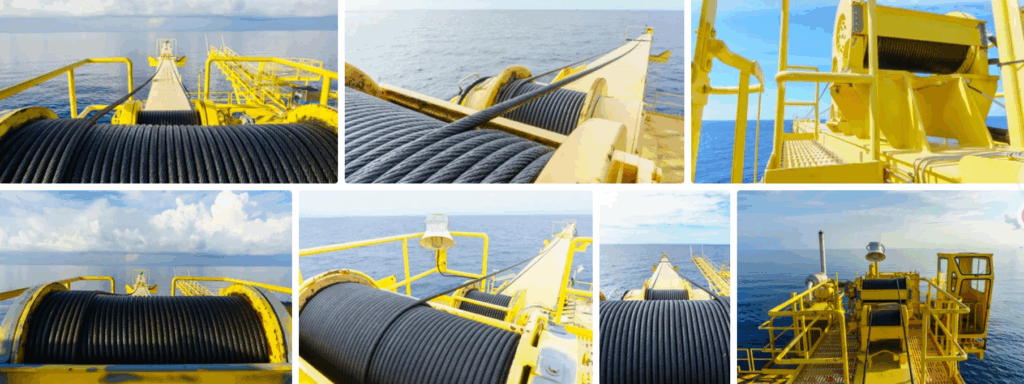
The Value Behind the Certificate
Some buyers see certifications as just an extra cost. But I have seen projects delayed for weeks because a rope arrived on-site without the proper documentation. The certificate is your proof that the rope you bought is exactly what the manufacturer claims it is.
Manufacturer’s Test Certificate (MTC)
This is the most basic level of certification. Every reputable manufacturer, including Aulone, provides an MTC with each rope reel. This document is our internal guarantee. It shows the results of our in-house quality control tests.
The MTC typically includes:
- Rope Diameter and Construction
- Tensile Grade of Wire
- Actual Breaking Load from a destructive test
- Date of Manufacture and Reel Number
- Compliance with a standard EN12385-4.
While essential, an MTC is a self-declaration. For high-risk industries like offshore, you need more.
Third-Party Classification Societies
This is where bodies like DNV (Det Norske Veritas) and ABS (American Bureau of Shipping) come in. They are independent, third-party organizations that set standards for the marine and offshore industries.
When you request a rope with a DNV or ABS certificate, it means an inspector from that society has overseen the manufacturing and testing process.
- Witnessing the Test: The surveyor might physically witness the destructive break test of a sample from your rope.
- Material Traceability: They verify that the raw materials used meet the required quality standards.
- Process Auditing: They ensure the manufacturer’s production processes are up to standard.
The final certificate from DNV or ABS gives you, your client, and regulatory bodies ultimate confidence in the rope’s quality and safety. We have extensive experience providing ropes with these certifications to clients in countries with very strict regulations.
Which Certificate Do You Need?
The required certification often depends on the vessel’s flag state, the operational area, or the end client’s specific demands.
| Certification Body | Primary Region of Influence | Key Focus |
|---|---|---|
| DNV | Global, strong in North Sea / Europe | Offshore structures, maritime vessels, risk management. |
| ABS | Global, strong in the Americas / Gulf of Mexico | Marine and offshore classification, safety standards. |
| LR (Lloyd’s Register) | Global, strong in UK / Asia | Maritime classification, assurance, and risk management. |
| RMRS (Russian Maritime Register) | Russia and associated countries | Classification and safety oversight for maritime operations. |
| BV (Bureau Veritas) | Global, strong in Europe / Africa | Testing, inspection, and certification across many industries. |
Always confirm the certification requirement before placing an order. We can provide ropes certified by any of these major societies to ensure you are fully compliant.
How Do You Properly Inspect and Maintain the Rope?
Buying a high-quality rope is the first step. The second, equally important step, is taking care of it. Proper inspection and maintenance are vital for maximizing service life and ensuring safety.
Proper inspection involves regular visual checks for damage like broken wires, corrosion, or deformation. Maintenance includes proper lubrication and ensuring the rope is stored correctly. A formal inspection schedule by a qualified person is mandatory.
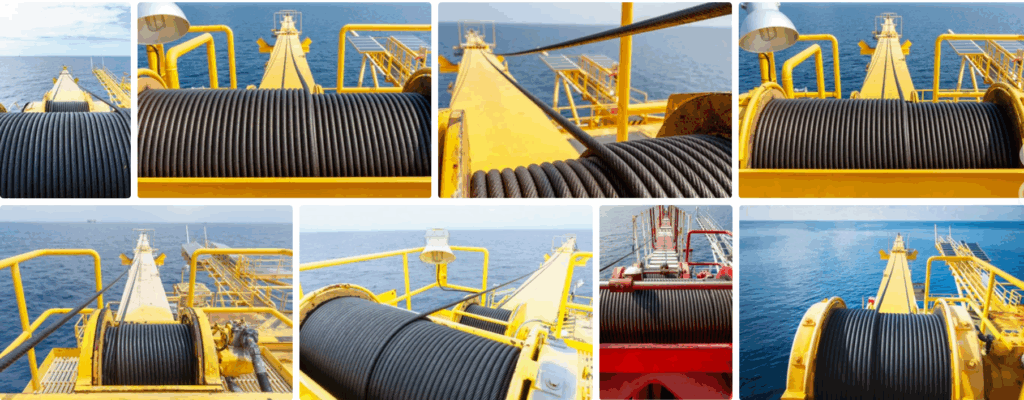
A Proactive Approach to Rope Care
A wire rope “retires” for specific reasons. By understanding and monitoring these retirement criteria, you can manage the rope’s life cycle proactively instead of waiting for a failure.
Regular Visual Inspections
The crane operator should perform a visual check before every shift. They are the first person to notice changes in the rope. They should look for:
- Broken Wires: Note the number and location of any visible broken wires.
- Corrosion: Look for signs of rust, especially near the end terminations.
- Kinks or Bends: Any sharp bends permanently damage the rope and are grounds for immediate removal.
- Abrasion: Flat spots on the outer wires indicate excessive rubbing against a surface.
- Core Protrusion: If the rope’s core pushes out from between the strands, the rope is unstable.
The Importance of Lubrication
Even a plastic-impregnated rope benefits from proper external lubrication. A good lubricant reduces friction between the rope and the sheaves or drum. It also adds another layer of protection against corrosion. The type of lubricant and frequency of application should follow the recommendations of the rope manufacturer and your company’s maintenance program.
Formal Retirement Criteria
International standards like ISO 4309 provide clear guidelines for when a wire rope must be retired from service. Your company’s appointed competent person will use these criteria during periodic, formal inspections.
Here is a simplified table of common reasons for rope retirement.
| Retirement Criteria | What it Looks Like | Why it’s Dangerous |
|---|---|---|
| Number of Broken Wires | A specific number of broken wires within a certain rope length (e.g., 6d or 30d). | Indicates the rope is losing strength and approaching the end of its fatigue life. |
| Reduction in Diameter | The rope’s diameter has decreased by a certain percentage (e.g., 7%). | Often a sign of internal core failure or severe external wear. The rope has lost significant metallic area. |
| Corrosion | Severe pitting or rust that makes a detailed inspection of wires impossible. | The rope’s remaining strength is unknown and cannot be trusted. |
| Deformation / Damage | Kinks, bird-caging, core protrusion, or heat damage. | The rope is structurally unstable and can fail suddenly and unpredictably under load. |
Keeping detailed inspection records is not just good practice; it’s a legal requirement in many regions. These records demonstrate your commitment to safety and provide a valuable history of the rope’s performance.
Conclusion
Choosing the right offshore crane wire rope means focusing on corrosion resistance, correct specifications, and essential certifications. Proper maintenance ensures its long, safe service life.

